ISO
MU Survey 2015: The US Results
The 2015 Global Measurement Uncertainty Survey also collected many responses from the US. However, as CLIA is the dominant regulation in the US, the responses are quite different than the rest of the globe.
2015 Measurement Uncertainty Survey: The View from the US
 Edited by Sten Westgard, MS
Edited by Sten Westgard, MS
November 2015
While ISO 15189 is the global standard, in the US the CLIA regulations reign supreme. And since measurement uncertainty is a mandate of ISO 15189, which few labs in the US have embraced, it is not surprising that fewer labs know, embrace, or utilize measurement uncertainty in the United States.
1. What tpe of US labs responded to the survey?
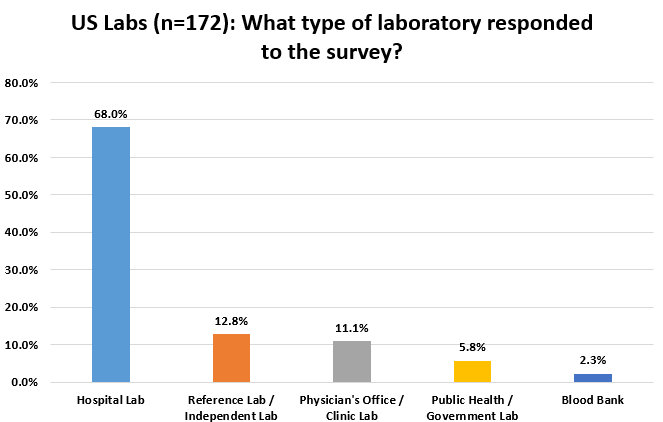
As with the global survey results, the main respondents were from hospital labs
2. What was the annual volume of the US lab respondents?
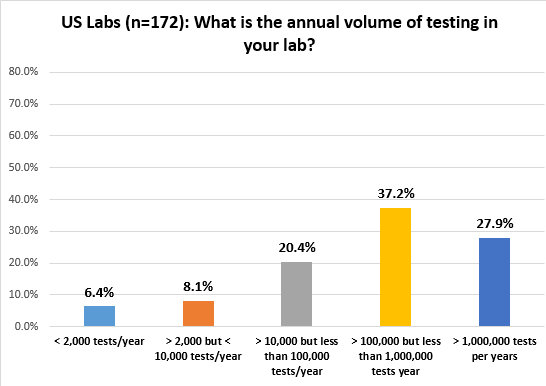
A majority of the labs are institutions with high volume of more than 100,000 tests per year. A quarter of these labs report out higher than one million tests per year.
3. How many US laboratories calculate measurement uncertainty?
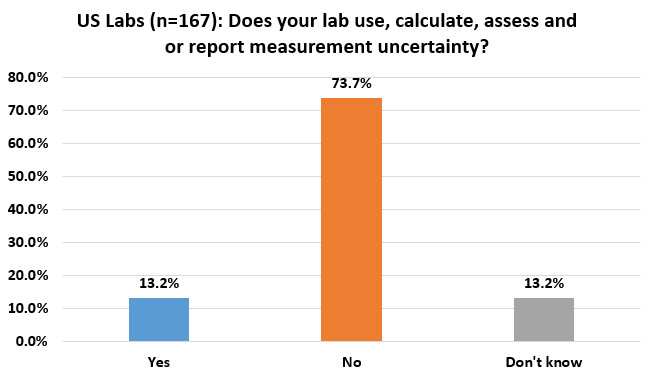
A majority of US labs do not calculate measurement uncertainty. Indeed, as many labs don't know if they calculate mu as know that they do.
There were only 32 responses that did answer positively. This was too small a sample to allow any useful conclusions.
3. Why aren't US labs using measurement uncertainty?
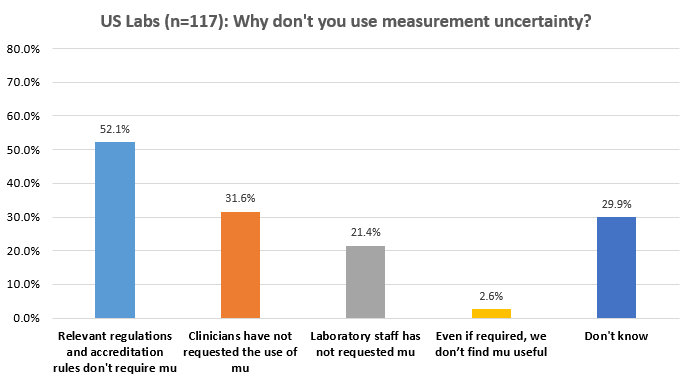
For the majority of US labs, the main reason they have not adopted mu, is that there is no mandated regulation or accreditation requirement. However, the second reason that many labs do not use mu is that clinicians have not requested the use.
4. What would it take to make US labs adopt measurement uncertainty?
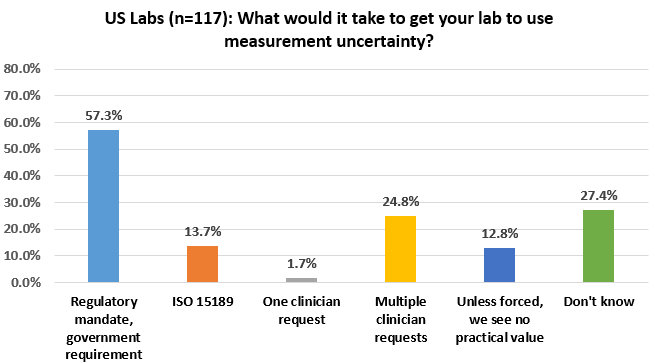
The leading motivation for US labs to adopt measurement uncertainty would be a regulatory mandate or the decision to pursue ISO 15189 accreditation. A concerted request from multiple clinicians, though, would have a bigger impact on the laboratory decisions.
